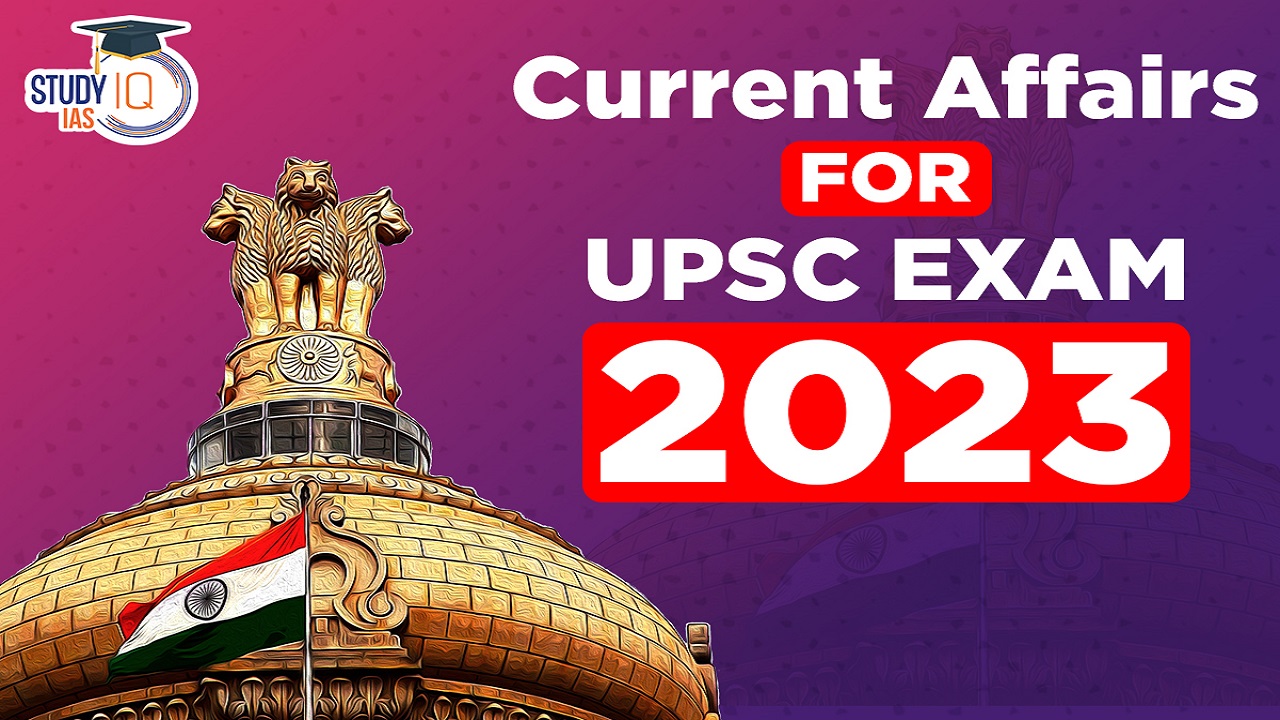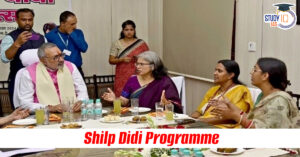Current Affairs 9th June 2023 for UPSC Prelims Exam
Agni Prime
Context: DRDO has successfully tested new generation ballistic missile ‘Agni Prime’ from Dr APJ Abdul Kalam Island.
About Agni Prime:
- Agni-Prime is a two-stage, surface to surface, road mobile and solid-fueled Medium Range Ballistic Missile.
- It has a range of 1,000 to 2,000 Km. it will gradually replace the Agni-I (700-km).
- Agni-Prime incorporates new propulsion systems and composite rocket motor casings as well as advanced navigation and guidance systems.
- It is a canister-launch system, allowing the armed forces to store it for long periods, swiftly transport it through rail or road when required, and fire it from any platform.
Ballistic Missile:
- Ballistic missiles are powered initially by a rocket or series of rockets in stages but then follow an unpowered trajectory that arches upwards before descending to reach its intended target.
- Warheads: Ballistic missiles can carry either nuclear or conventional warheads.
- Classifications: There are four general classifications of ballistic missiles based on their range:
- Short-range: Less than 1,000 kilometers (approximately 620 miles), also known as “tactical” ballistic missiles.
- Medium-range: Between 1,000 and 3,000 kilometers (approximately 620-1,860 miles), also known as “theater” ballistic missiles.
- Intermediate-range: Between 3,000 and 5,500 kilometers (approximately 1,860-3,410 miles)
- Long-range: More than 5,500 kilometers (approximately 3,410 miles), also known as intercontinental or strategic ballistic missiles.

Current Affairs 8th June 2023 for UPSC Prelims Exam
Priority Sector Lending
Context: Priority Sector Lending target deadline for Urban Cooperative Banks has been extended by the RBI.
What is Priority Sector Lending?
- Priority Sectors are those sectors that the Government of India and Reserve Bank of India consider as important for the development of the basic needs of the country and are to be given priority over other sectors.
- Priority sector lending (PSL) include only those sectors, as part of the priority sector that impact large sections of the population, the weaker sections and the sectors which are employment-intensive such as agriculture, and Micro and Small enterprises.
- Priority Sector lending by banks in India constitutes the lending to:
- Agriculture
- Micro, Small and Medium Enterprises
- Export Credit
- Education
- Housing
- Social Infrastructure
- Renewable Energy
- RBI’s guidelines for PSL for scheduled commercial banks:
- 40% of the total net bank credit should go to a priority sector advances.
- 10% of the priority sector advances or 10% of the total net bank credit, whichever is higher should go to weaker section.
- 18% of the total net bank credit should go to agricultural advances.
- Within the 18% target for agriculture, a target of 8% of Adjusted Net Bank Credit (ANBC) or Credit Equivalent Amount of Off-Balance Sheet Exposure, whichever is higher is prescribed for Small and Marginal Farmers, to be achieved in a phased manner.
- 5 of ANBC or Credit Equivalent Amount of Off-Balance Sheet Exposure, whichever is higher should go to Micro enterprises.
- The PSL now includes bank finance to start-ups for up to Rs 50 crore.
- Loans to farmers for installation of solar power plants for solarisation of grid-connected agriculture pumps and loans for setting up Compressed Bio Gas (CBG) plants have been included as fresh categories eligible for finance under priority sector.
- Significance: PSL fosters better credit penetration to credit deficient areas; increase the lending to small and marginal farmers and weaker sections; boost credit to renewable energy, and health infrastructure.
Recent Move by RBI
- The RBI has given Indian urban cooperative banks more regulatory flexibility by extending the meeting deadline for their priority sector lending targets by March 31, 2026.
- Suitable incentives shall be provided to UCBs that have met the prescribed targets as on March 31, 2023.
- The proposal to allow more time to meet the targets shall reduce their PSL purchases and support their profitability in the interim.
TReDS
Context: Reserve Bank of India (RBI) issued a directive to TReDS operators and participants to facilitate insurance for transactions.
About Trade Receivables Discounting System (TReDS)
- It is an invoice discounting platform set up by the Reserve Bank of India (RBI) in 2018, for regulating the trade receivables between Micro, Small & Medium Enterprises (MSMEs), large organisations and financiers.
- It allows MSME suppliers to discount their invoices, enabling them to receive payments before their due date.
- Objective of the TReDS:
- To facilitate the financing of invoices of MSME vendors drawn on big organisations and other corporates, including Public Sector Undertakings (PSUs) and Government Departments, by discounting by the financiers.
- To help MSMEs manage their working capital requirements.
- Participants in this system work together to facilitate, accept, discount, and settle the invoices. TReDS’ primary purpose

Advantages of TReDS for MSME suppliers
- Minimal paperwork required
- MSME do not have the onus in case of default in payment by the buyer
- MSME sellers have the right to determine the best bid
- MSME sellers can get the payment on T+1 on a successful auction
- MSME sellers do not have to follow up with the buyer
Limitations of TReDS
- Privacy: Many organisations believe that their competitors would be able to find out where their organisation sources its materials.
- Recovery: Businesses often prefer giving lengthier credit terms to their suppliers and may not be able to recover the receivables within 45 days.
Typhoid Fever
Context: Bharat Biotech has recalled a batch of its typhoid vaccine after it was flagged by the Central Drugs Standard Control Organisation (CDSCO) as “not of standard quality”.
- TYBPAR typhoid vaccine: It is the first vaccine in India to get a World Health Organisation Good Manufacturing Practice (WHO-GMP) prequalification certificate and is currently sold in more than 50 countries
About Typhoid
- Typhoid fever is a life-threatening infection caused by the bacterium Salmonella Typhi.
- It is usually spread through contaminated food or water.
- Once Salmonella Typhi bacteria are ingested, they multiply and spread into the bloodstream.
- Places with the highest number of cases or with regular outbreaks are in Africa and South Asia.
- India is an endemic country for typhoid with a burden of approximately 4.8 million cases per year.
- It is a serious health threat, especially for children, in places where it is more common.
- Close contact with a person who is carrying the salmonella bacteria also can cause typhoid fever.
- Symptoms
- High fever.
- Headache.
- Stomach pain.
- Constipation or diarrhoea.
- Treatment: Most people who have typhoid fever feel better about a week after they start treatment to kill bacteria.
- However, without treatment, there is a small chance of death from typhoid fever complications.
- Vaccines against typhoid fever can provide some protection.

Chandrayaan-3 Mission
Context: Indian Space Research Organisation (ISRO) chairman said that they are planning to launch the Chandrayaan-3 moon mission in mid-July.
About Chandrayaan-3 Mission
- Chandrayaan-3 mission is a follow-up of Chandrayaan-2 of July 2019, which aimed to land a rover on the lunar South Pole.
- It will explore the far side of the Moon and will attempt to soft land on the lunar surface.
- Lander will have the capability to soft land at a specified lunar site and deploy the Rover which will carry out in-situ chemical analysis of the lunar surface during the course of its mobility.
- Objective: To demonstrate soft landing capability on the Moon and make India only the fourth country in the world to have that ability.
- It will also act as a confidence boost for ISRO, which has plans to explore the Sun and Venus in the coming months and years.
- Instrument
- Chandra Surface Thermophysical Experiment (ChaSTE) will measure the thermal conductivity and temperature.
- Instrument for Lunar Seismic Activity (ILSA) will measure the seismicity around the landing site.
- Langmuir Probe (LP) will estimate the plasma density and its variations and a passive Laser Retroreflector Array from NASA is accommodated on the mission for lunar laser ranging studies.

About Chandrayaan Mission
- Chandrayaan is India’s lunar exploration program consisting of a series of robotic missions that aims to explore the Moon and its resources.
- It puts India in the coveted league of being only the 4th country in the world after the United States, Russia and China to have successfully landed on the moon.
- Chandrayaan-1 mission
- It was launched in October 2008 and it orbited the Moon and performed a number of scientific experiments and observations.
- It was India’s first lunar mission and the first to discover water on the Moon.
- It was operational for 312 days till August 29, 2009.
- Chandrayaan-2 mission
- It was launched in July 2019, and involves an orbiter, a lander (Vikram), and a rover (Pragyaan), all built by ISRO.
- It was India’s first attempt at soft landing near the south pole of the Moon.
- The lander Vikram crashed into the lunar surface apparently because of an issue with its braking rockets.
State Food Safety Index 2022-23
Context: Kerala has secured the first position in the state food safety index (SFSI) 2022-23 of the Food Safety and Standards Authority of India (FSSAI).
What is the State Food Safety Index (SFSI)?
- To encourage States/UTs to improve and work towards food safety in their jurisdiction, the Food Safety and Standards Authority of India (FSSAI) releases the State Food Safety Index (SFSI) annually for each financial year on 7th June on the occasion of World Food Safety Day.
- The Index is a dynamic quantitative and qualitative benchmarking model that provides an objective framework for evaluating food safety across all States/UTs.
- The index will measure the performance of states on five significant parameters of Food Safety.
- Human Resources & Institutional Data: This parameter assesses the availability and adequacy of human resources such as the number of Food Safety Officers, tribunals etc.
- Compliance: This parameter evaluates the adherence to food safety regulations and standards by assessing the compliance rate of food businesses with regulatory requirements.
- Food Testing – Infrastructure and Surveillance: This parameter focuses on the availability and accessibility of food testing laboratories in the states/UTs.
- Training and Capacity Building: This parameter measures the efforts and initiatives taken by states/UTs to enhance the knowledge and skills of food safety personnel through training programs and capacity-building activities.
- Consumer Empowerment: This parameter assesses the engagement and empowerment of consumers in food safety. It evaluates the existence and effectiveness of mechanisms for consumer awareness, grievance redressal, and the availability of information related to food safety.
- SFSI 2022-23 is the fifth edition of the SFSI since its inception in 2018-19.
About the Food Safety and Standards Authority of India (FSSAI)
- Food Safety and Standards Authority of India (FSSAI) is an autonomous statutory body established under the Food Safety and Standards Act, 2006 (FSS Act).
- It works under the aegis of Ministry of Health & Family Welfare.
- Headquarters: New Delhi.
- Functions of FSSAI:
- Framing of regulations to lay down the standards and guidelines of food safety.
- Granting FSSAI food safety license and certification for food businesses.
- Laying down procedure and guidelines for laboratories in food businesses.
- To provide suggestions to the government in framing the policies.
- To collect data regarding contaminants in foods products, identification of emerging risks and introduction of rapid alert system.
- Creating an information network across the country about food safety.
- Promote general awareness about food safety and food standards.


 UNEP Champions of the Earth Award: UN's ...
UNEP Champions of the Earth Award: UN's ...
 Shilp Didi Programme: Empowering Women A...
Shilp Didi Programme: Empowering Women A...
 Is the Falling Rupee a Cause for Alarm?
Is the Falling Rupee a Cause for Alarm?

























